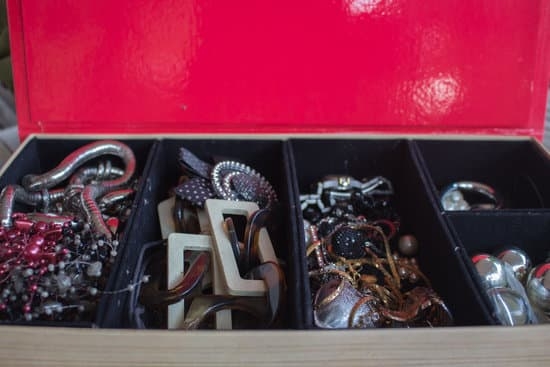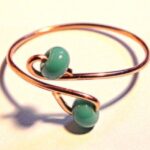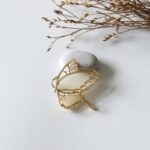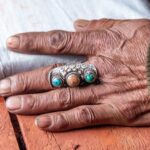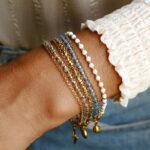Can you shower in gold plated jewelry? This question often arises when discussing the appropriate care and maintenance of gold plated pieces.
Gold plated jewelry is a popular and affordable alternative to solid gold, but there are misconceptions about its durability and suitability for activities like showering. In this article, we will explore the process of gold plating, the effects of water on gold plated jewelry, the importance of proper care, different types of gold plated jewelry, benefits and precautions of showering with it, and ultimately bust common myths surrounding this topic.
Gold plating is a process where a thin layer of gold is applied to a base metal through electroplating. This creates the appearance of solid gold without the hefty price tag. In terms of value and care, understanding how this process works is essential for ensuring that your favorite pieces last as long as possible despite regular wear, including during activities like showering.
The impact of water on gold plated jewelry can vary depending on factors such as water quality and length of exposure. Understanding these effects can help in determining whether or not it’s advisable to shower with your gold plated jewelry.
Additionally, knowing how to properly clean and maintain these pieces is crucial in preserving their appearance and extending their lifespan. Throughout this article, we will delve into this topic in order to provide you with comprehensive information on maintaining your beloved gold plated jewelry.
The Process of Gold Plating
Gold plating is a popular technique used to add a layer of gold onto various jewelry pieces. The process of gold plating involves the use of electric current to deposit a thin layer of gold onto the surface of the base metal, which can be made from materials such as brass, copper, or silver. This process results in jewelry that has the appearance of solid gold at a fraction of the cost.
Detailing the Process
During the gold plating process, jewelry pieces are thoroughly cleaned and prepared to ensure proper adhesion of the gold layer. The item is then immersed in an electrolyte solution containing dissolved gold ions, while an electrical current is applied.
This causes the positively charged gold ions to adhere to the negatively charged jewelry piece, resulting in an even coating of gold. The thickness of this gold layer can vary depending on factors such as duration of plating and desired final appearance.
Durability and Water Resistance
Gold plating offers varying levels of durability depending on factors such as thickness and the type of base metal used. While a thicker layer of gold provides better durability, it is important to note that all types of gold plating are susceptible to wear over time.
When considering whether one
Impact of Water on Gold Plated Jewelry
When exposed to water, especially chlorinated or saltwater, the appearance and integrity of gold plated jewelry
It’s important to consider these potential effects before deciding whether or not to wear your gold plated jewelry in the shower. However, certain precautions can be taken to mitigate these risks and preserve your pieces for as long as possible.
Effects of Water on Gold Plated Jewelry
Gold plating is a process where a thin layer of gold is applied to a base metal, creating the appearance of solid gold jewelry. One common misconception regarding gold plated jewelry is whether it can be worn in the shower. Many people wonder, “Can you shower in gold plated jewelry?” The answer is that while some gold plated jewelry can withstand occasional exposure to water, prolonged and repeated contact with water can cause damage over time.
When it comes to the effects of water on gold plated jewelry, it’s important to consider how moisture can impact its appearance and structural integrity. Water exposure can lead to tarnishing, discoloration, or even fading of the thin layer of gold. Additionally, chemicals commonly found in soaps, shampoos, and other shower products can further accelerate these negative effects on the jewelry.
To minimize the impact of water on gold plated jewelry, there are some precautions that individuals can take. For example, removing gold plated jewelry before swimming or bathing can significantly reduce prolonged exposure to water and potentially harmful substances. Properly drying the jewelry after any water exposure and storing it in a dry place can also help preserve its appearance and extend its longevity.
In summary – regular use of your gold-plated jewelry might have an effect due to continued wetness contact caused by daily showers.
It is advisable (despite many still choosing not) for persons wearing these articles frequently – more especially if they would prefer not having an aversion to those minerals as nickel – to avoid unnecessary contacts with any wet condition; this thing could happen today non-desirable detachment between layers of materials or even color degradation as well – among other possible problems.
The Importance of Proper Care
Proper care is essential for maintaining the appearance and longevity of gold plated jewelry. Although it may be tempting to wear your favorite pieces in the shower, it’s important to understand the potential impact of water on this type of jewelry. Gold plated jewelry is created by bonding a thin layer of gold onto a base metal, so prolonged exposure to water can accelerate tarnishing and wear.
To ensure that your gold plated jewelry maintains its luster, follow these care tips:
- Avoid wearing gold plated jewelry in the shower or while swimming
- Remove jewelry before applying lotions, perfumes, or other beauty products
- Gently clean jewelry with a soft cloth after each use to remove oils and residue from skin contact
- Store gold plated jewelry in a cool, dry place away from direct sunlight and moisture
While it may seem convenient to leave your favorite gold plated accessories on while you shower, following these care tips can help preserve the quality and appearance of your cherished pieces.
Remember that proper maintenance is key to keeping your gold plated jewelry looking its best. By taking the necessary precautions and incorporating proper care into your routine, you can enjoy your favorite pieces for years to come.
Considering Different Types of Gold Plated Jewelry
When considering the option of showering with gold plated jewelry, it is essential to take into account the varying quality and composition of such pieces. Different types of gold plated jewelry can have distinct characteristics that may impact their ability to withstand water exposure. Here is an exploration of the different types of gold plated jewelry and how they may differ when it comes to showering:
- Gold Vermeil: This type of gold plated jewelry is created by coating sterling silver with a thick layer of gold. Due to its superior thickness, gold vermeil jewelry tends to be more resistant to water exposure compared to other types of gold plated jewelry.
- Gold Filled: Unlike regular gold plating, gold filled jewelry involves bonding a thick layer of gold onto a base metal using heat and pressure. As a result, it offers better durability and may hold up well during occasional showering.
- Fashion or Costume Jewelry: Commonly made from brass or other base metals coated with a thin layer of gold, fashion or costume jewelry may not fare well when consistently exposed to water over time.
It’s important to note that the overall quality and thickness of the gold plating on these different types of jewelry can greatly influence how they respond to water exposure. While some types may hold up decently in the shower, others may show signs of wear or tarnish more quickly.
Considering the variety in quality among different types of gold plated jewelry, it is advisable for individuals who wish to shower with their jewelry to opt for pieces with thicker plating and durable materials. Taking this step can help minimize the potential impact that water exposure might have on the appearance and longevity of the jewelry.
Benefits of Showering With Gold Plated Jewelry
Wearing gold plated jewelry in the shower can be a convenient and practical choice for many individuals. This section will explore the potential benefits of showering with gold plated jewelry, addressing both the aesthetic and practical aspects of this practice.
Convenience and Practicality
One of the main benefits of wearing gold plated jewelry in the shower is the convenience it offers. For individuals who lead busy lifestyles, being able to keep their jewelry on during their daily cleansing routine can save time and effort. Additionally, wearing jewelry in the shower can prevent the risk of misplacing or forgetting to put it back on after getting ready, especially for those with multiple piercings or pieces of body jewelry.
Enhanced Durability
Contrary to common misconceptions, well-made gold plated jewelry
Hygienic Benefits
In addition to convenience and durability, wearing gold plated jewelry in the shower
By recognizing these benefits, individuals can make informed decisions about whether or not they choose to wear their gold plated jewelry in the shower. Despite common misconceptions, this practice can be convenient, durable, and even beneficial from a hygiene standpoint when done appropriately. Water resistance varies among different types of gold plated jewelry but understanding these potential advantages
Precautions to Take
When it comes to wearing gold plated jewelry in the shower, there are certain precautions that need to be taken to ensure the longevity and appearance of the jewelry. While some types of gold plated jewelry can withstand exposure to water, others may be more susceptible to damage. It is important to understand the potential impact of water on different types of gold plated jewelry and take appropriate measures.
One precaution to take when showering with gold plated jewelry is to minimize exposure to harsh chemicals found in soaps, shampoos, and conditioners. These chemicals can accelerate the tarnishing process of gold plating, leading to a dull and discolored appearance. To prevent this, it is recommended to remove any gold plated jewelry before using such products in the shower.
Another important precaution is to gently dry the gold plated jewelry after showering. Water residue can cause stains or discoloration on the surface of the jewelry if left unattended. Using a soft, lint-free cloth to carefully pat dry the jewelry can help prevent any unwanted damage caused by water exposure.
It’s also crucial to avoid exposing gold plated jewelry to abrasive materials while showering. Scrubbing or rubbing against rough surfaces like loofahs or washcloths can scratch or wear down the thin layer of gold plating over time. Taking care to protect the surface of the jewelry during showers will help maintain its original appearance.
In summary, while it is possible to shower with certain types of gold plated jewelry, it is essential to take precautions to minimize potential damage from water exposure. By understanding how different elements can impact gold plating and taking appropriate measures, individuals can continue enjoying their gold plated jewelry without compromising its quality and appearance.
| Precautions | Description |
|---|---|
| Minimize exposure | Avoid harsh chemicals found in soaps and shampoos |
| Gently dry | Pat dry with a soft, lint-free cloth after showering |
| Avoid abrasion | Avoid scrubbing against rough surfaces during showers |
Myth Busting
In conclusion, the question “Can you shower in gold plated jewelry?” has been thoroughly explored and debunked. While there are varying opinions on the matter, it is clear that the process of gold plating creates a durable layer of gold on jewelry that can withstand occasional exposure to water. It is important for individuals to understand the process of gold plating and how water can potentially impact the appearance and durability of their jewelry.
Proper care and maintenance play a vital role in preserving the quality of gold plated jewelry, including when it comes to showering with it. By following recommended cleaning and maintenance practices, individuals can minimize any potential damage from showering with their gold plated jewelry. Additionally, choosing high-quality gold plated jewelry with a thicker layer of gold can also help reduce the impact of water exposure.
While some precautions should be taken when showering with gold plated jewelry, such as avoiding harsh chemicals or abrasive materials, wearing certain types of gold plated jewelry in the shower can be convenient and practical. It is important for individuals to consider the composition and quality of their jewelry before deciding whether to wear it in the shower.
In essence, while there may be misconceptions surrounding this topic, proper knowledge and care can ensure that individuals enjoy their gold plated jewelry without fear of damage from showering.
Frequently Asked Questions
Can Gold Plated Jewelry Get Wet?
Gold plated jewelry can get wet, but it is important to be cautious. It is best to avoid exposing gold plated jewelry to water as much as possible, as the moisture can cause the gold plating to eventually wear off.
It is recommended to remove gold plated jewelry before swimming, bathing, or participating in activities where it may come into contact with water.
Can I Wear 14k Gold Plated in the Shower?
It is not advisable to wear 14k gold plated jewelry in the shower. The combination of soap, shampoo, and hot water can accelerate the wearing off of the gold plating. To prolong the life of 14k gold plated jewelry, it is best to remove it before showering or bathing.
How Long Will Gold Plated Jewelry Last?
The longevity of gold plated jewelry depends on several factors including how often it is worn and how well it is cared for. Under normal conditions and with proper care, gold plated jewelry can last anywhere from one to three years.
Avoiding exposure to water and harsh chemicals, storing it properly, and gentle cleaning can all help extend the life of gold plated jewelry.

Welcome to my jewelry blog! My name is Sarah and I am the owner of this blog.
I love making jewelry and sharing my creations with others.
So whether you’re someone who loves wearing jewelry yourself or simply enjoys learning about it, be sure to check out my blog for insightful posts on everything related to this exciting topic!

